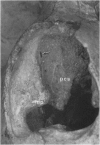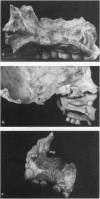Abstract
For many years, the Neanderthals have been recognized as a distinctive extinct hominid group that occupied Europe and western Asia between about 200,000 and 30,000 years ago. It is still debated, however, whether these hominids belong in their own species, Homo neanderthalensis, or represent an extinct variant of Homo sapiens. Our ongoing studies indicate that the Neanderthals differ from modern humans in their skeletal anatomy in more ways than have been recognized up to now. The purpose of this contribution is to describe specializations of the Neanderthal internal nasal region that make them unique not only among hominids but possibly among terrestrial mammals in general as well. These features lend additional weight to the suggestion that Neanderthals are specifically distinct from Homo sapiens.
Full text
PDF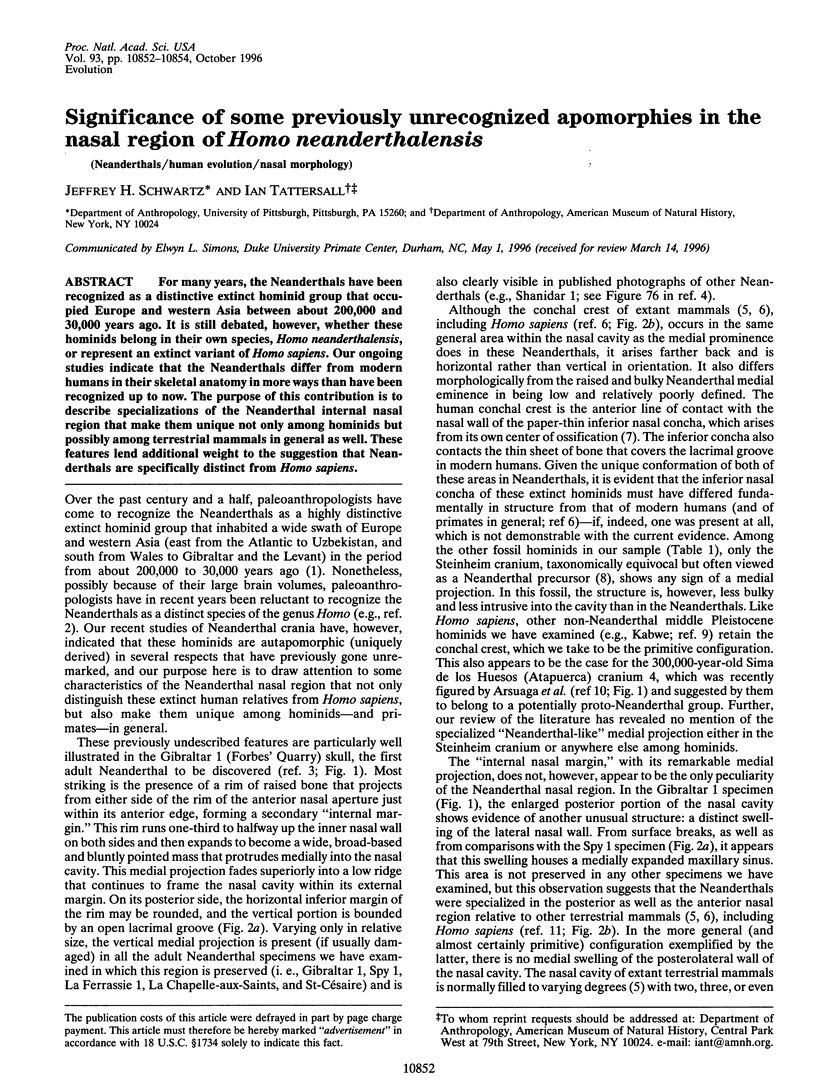
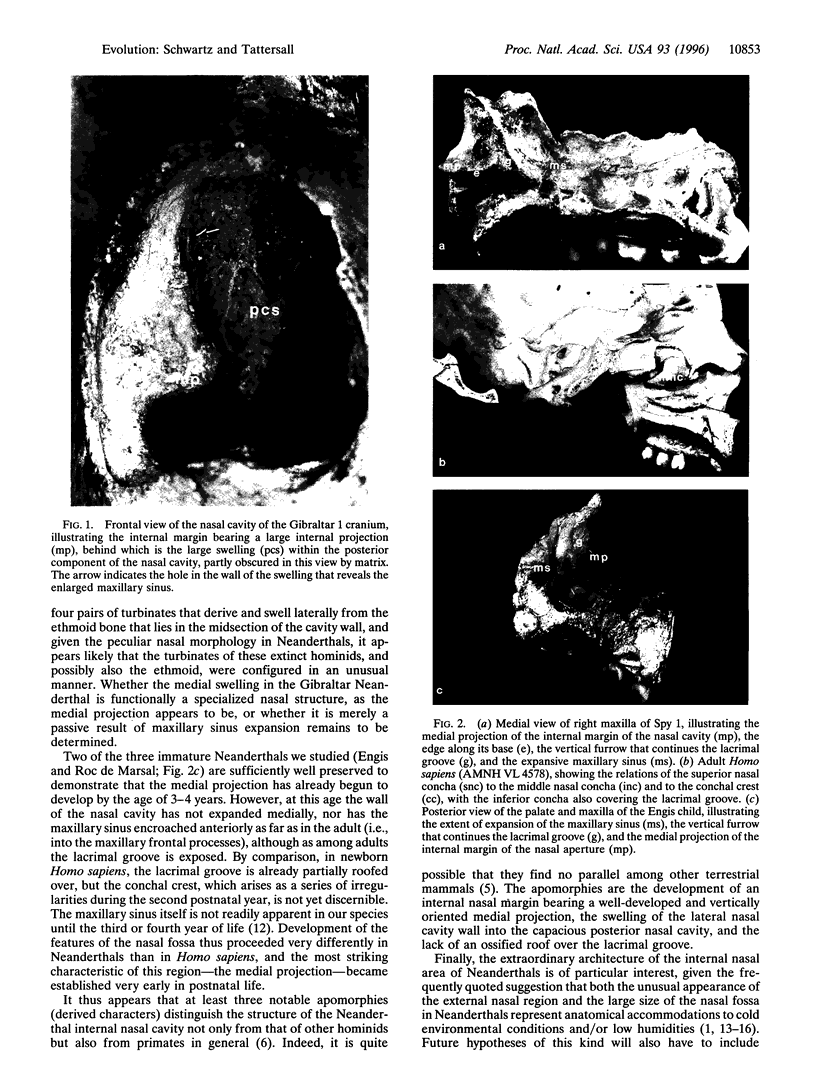
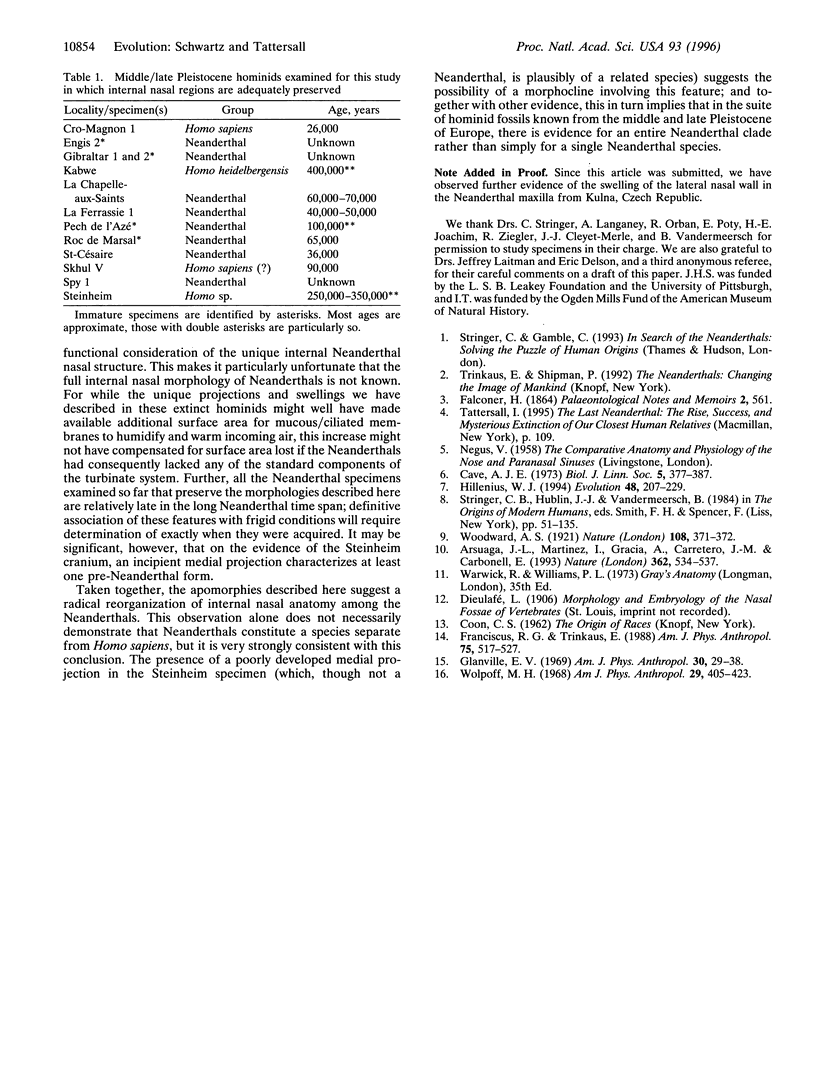
Images in this article
Selected References
These references are in PubMed. This may not be the complete list of references from this article.
- Arsuaga J. L., Martínez I., Gracia A., Carretero J. M., Carbonell E. Three new human skulls from the Sima de los Huesos Middle Pleistocene site in Sierra de Atapuerca, Spain. Nature. 1993 Apr 8;362(6420):534–537. doi: 10.1038/362534a0. [DOI] [PubMed] [Google Scholar]
- Franciscus R. G., Trinkaus E. Nasal morphology and the emergence of Homo erectus. Am J Phys Anthropol. 1988 Apr;75(4):517–527. doi: 10.1002/ajpa.1330750409. [DOI] [PubMed] [Google Scholar]
- Glanville E. V. Nasal shape, prognathism and adaptation in man. Am J Phys Anthropol. 1969 Jan;30(1):29–37. doi: 10.1002/ajpa.1330300104. [DOI] [PubMed] [Google Scholar]
- Wolpoff M. H. Climatic influence on the skeletal nasal aperture. Am J Phys Anthropol. 1968 Nov;29(3):405–423. doi: 10.1002/ajpa.1330290315. [DOI] [PubMed] [Google Scholar]



